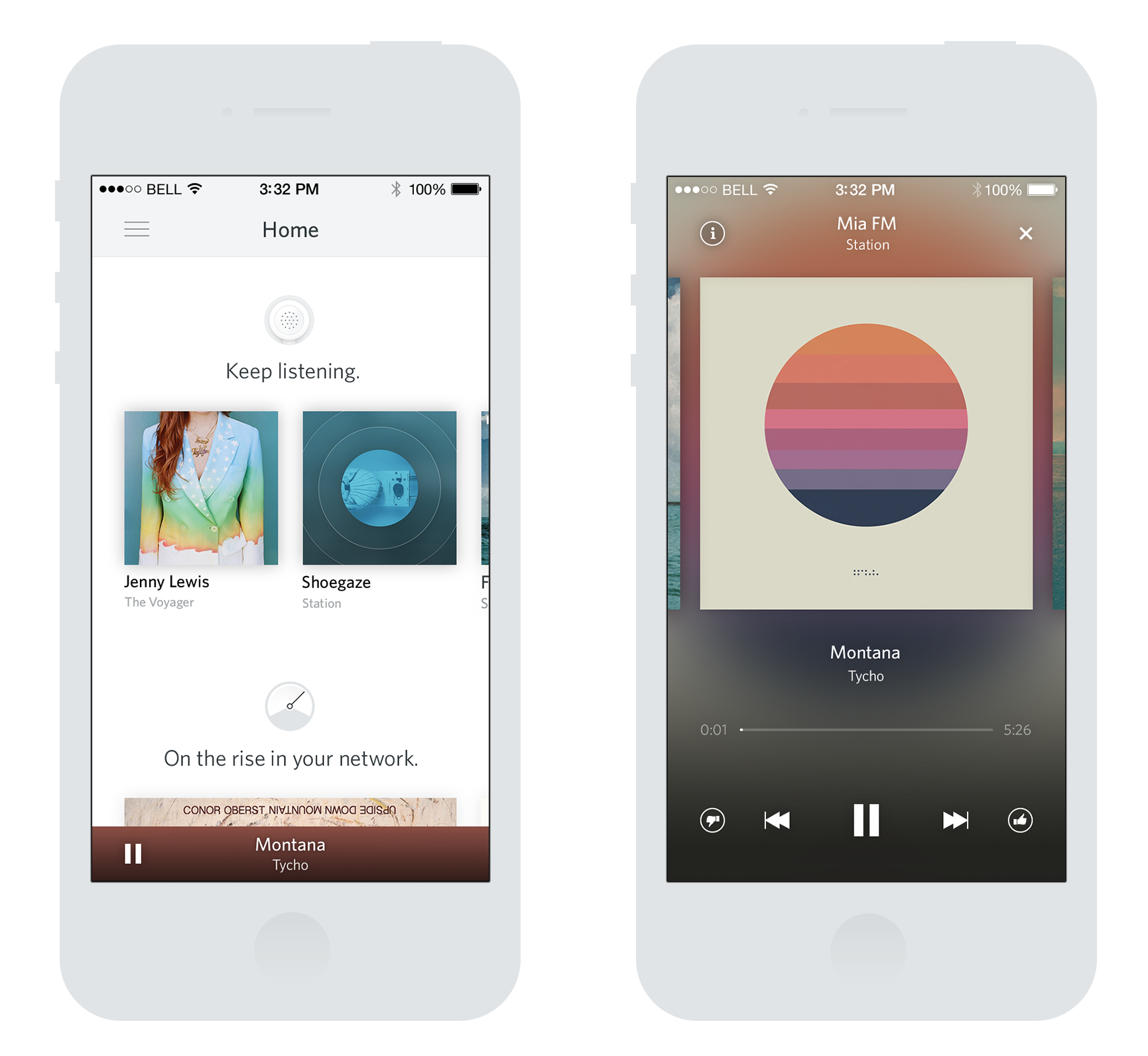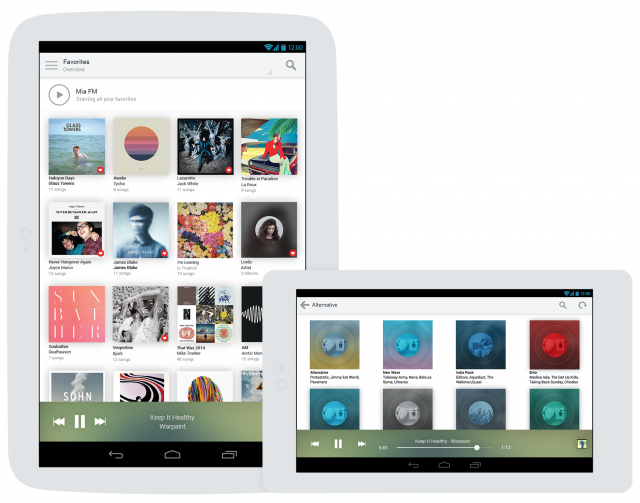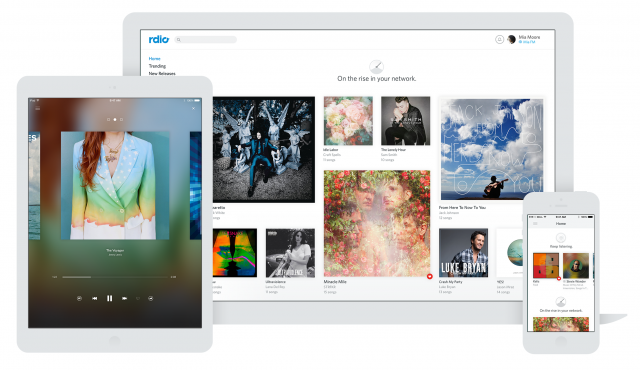
Rdio is embracing free streaming as a way to build its user base in a sweeping overhaul of its mobile and web product this week.
The California-based on-demand music service has turned on free ad-based streaming in 20 countries, including Canada, coinciding with a redesign that has more in common with Facebook than Pandora.
The streaming portion will feel very familiar to anyone who has used Pandora or Songza, and that’s not a coincidence. Chris Becherer, Rdio’s SVP of Product, acknowledges the virtues of free streaming services. “People have been using different services for different things, and are cheating themselves out of all of that listening data. Rdio is the first service that pairs different listening modes in a first class way,” he said.
Rdio’s paid on-demand streaming service will continue unchanged, but for some reframing of its existing sections. Users will no longer add songs or albums to a Collection, nor will they subscribe to a Playlist or listen to a Station — at least not in a vacuum. All listening activity will be stored under Favourites, a new section that itemizes preferred music in its myriad forms. “After we launched Stations [in late 2013], we realized that at some point users are listening to both [albums and stations],” said Becherer. “Variety for us is a competitive advantage.”
With over 30 million tracks in its database, Rdio has a lot of content to draw from, too. Becherer explains that by using Rdio as a one-stop shop for both on-demand and streaming music, users build an expansive mesh network of music history. Each favourited song, album, artist, playlist or station contributes to better recommendations, which is important for Rdio’s ability to select the best upcoming song in an algorithmically-generated playlist.
Since the company parted ways with The Echo Nest after the recommendation engine was purchased by rival Spotify earlier this year, being able to generate a propitious list of songs based on a particular theme has become a core focus of Rdio’s business.
But algorithms only go so far in the music world these days: as Beats Music and Songza have proven, curation is a key differentiator (and apparently a core competency for acquisition by Apple or Google). Along with Rdio’s push towards free streaming, a set of curated playlists by the company’s new editorial team will be made available. While many of them are fashioned around specific activities — working out, studying, back-to-school, etc. — and are not connected to any brands at this point, Becherer acknowledges Rdio is working with companies to sponsor thematic playlists, similar to Songza’s native advertising strategy.
To make accessing this new wealth of features easier, Rdio has reimagined what will been seen when the app is first opened. Dubbed Home, both free and paid users will see a feed of suggested stations and playlists, popular comments, curated recommendations, trending albums, new releases and more. The more content a user favourites, the more personalized the Home feed becomes.
Also more heavily emphasized is the social aspect of Rdio. While the service already encouraged users to link their Facebook accounts and follow other Rdio users, the Home feed will display popular comments and, on the web, a real-time peek at what one’s friends are listening to.
Over the years, Rdio’s continued push for simplicity and precision has led to some controversial design choices. There’s a leanness to Rdio — a focus on big, beautiful images and straightforward UX — that has engendered itself to lovers of minimalism, and the tech community at large. While Spotify and Deezer are bigger in terms of subscriber numbers, Rdio has been honing its offering to appeal to as large a demographic as possible.
With a new emphasis on stations, which can be created and enjoyed within seconds, Rdio’s appeal broadens to millions of potential customers that wouldn’t have considered spending $9.99/month for a subscription. While free listeners to continue to be gently pushed towards paying, on-demand music is no longer the company’s focus. “We’ve re-examined every part of Rdio through a stations-first lens,” Becherer told us, claiming that the company will begin to call itself a free streaming radio service in its marketing going forward.
While today’s announcements impact free listeners the most, and draws on the company’s partnership with Shaw Media for its advertising revenue, paid customers have a brand new home screen, a more straightforward app design, a wealth of new station options, and improved social features to discover new music from friends.
The update is rolling out to iOS and Android users today, and is live on the web right now. Rdio also arrives on Roku set-top boxes today, expanding its TV presence beyond Apple TV and Chromecast.
[source]App Store, Google Play[/source]
MobileSyrup may earn a commission from purchases made via our links, which helps fund the journalism we provide free on our website. These links do not influence our editorial content. Support us here.




